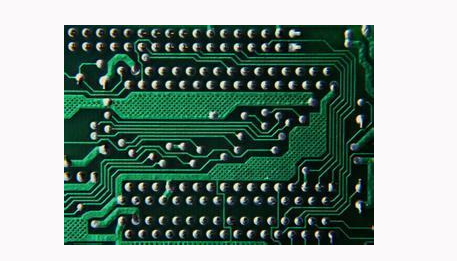Difficulties in the production of multi-layer circuit boards proofing2
3. Difficulties in pressing production
Multiple PCB inner-layer core boards and prepregs are superimposed, and defects such as slippage, delamination, resin voids and bubble residues are prone to occur during lamination production. When designing the laminated structure, it is necessary to fully consider the heat resistance of the material, withstand voltage, the amount of glue and the thickness of the medium, and set a reasonable PCB high-level circuit board pressing program. There are many layers, and the amount of expansion and contraction control and the compensation of the size factor cannot be kept consistent; the thin interlayer insulation layer can easily lead to the failure of the interlayer reliability test. Figure 1 is a defect diagram of the delamination of the plate after the thermal stress test.
4. Difficulties in drilling drilling
The use of high-TG, high-speed, high-frequency, and thick copper special plates increases the difficulty of drilling roughness, drilling burrs and de-drilling. There are many layers, the cumulative total copper thickness and the plate thickness, the drilling is easy to break the knife; the dense BGA is many, the CAF failure problem caused by the narrow hole wall spacing; the plate thickness is easy to cause the inclined drilling problem.

2. Control of key production processes
1. PCB material selection
With the development of high-performance and multi-functional electronic components, high-frequency, high-speed development of signal transmission is brought about, so the dielectric constant and dielectric loss of electronic circuit materials are required to be relatively low, as well as low CTE and low water absorption. Rate and better high-performance copper clad laminate materials to meet the processing and reliability requirements of high-level boards. Commonly used board suppliers mainly include A series, B series, C series, and D series. The main characteristics of these four inner substrates are compared, see Table 1. For high-rise thick copper circuit boards, use prepregs with high resin content. The amount of glue flowing between the interlayer prepregs is enough to fill the inner layer pattern. If the insulating dielectric layer is too thick, the finished board may be too thick. On the contrary, if the insulating dielectric layer is too thin, it is easy to cause Quality problems such as dielectric delamination and high-voltage test failure, so the selection of insulating dielectric materials is extremely important.
2. Laminated laminated structure design
The main factors considered in the design of the laminated structure are the heat resistance of the material, the withstand voltage, the amount of filler, and the thickness of the dielectric layer. The following main principles should be followed.
1. . When the customer requires high TG board, the core board and prepreg must use the corresponding high TG material.
2. . The prepreg and core board manufacturers must be consistent. In order to ensure PCB reliability, avoid using a single 1080 or 106 prepreg for all layers of prepreg (except for special requirements of the customer). When the customer has no media thickness requirements, the thickness of the media between each layer must be guaranteed ≥0.09mm in accordance with IPC-A-600G.
3. . For the inner substrate 3OZ or above, use prepregs with high resin content, such as 1080R/C65%, 1080HR/C68%, 106R/C73%, 106HR/C76%; but try to avoid the structural design of 106 high-adhesive prepregs. In order to prevent multiple 106 prepregs from superimposing, because the glass fiber yarn is too thin, the glass fiber yarn collapses in the large substrate area, which affects the dimensional stability and the delamination of the plate.
4. . If the customer has no special requirements, the thickness tolerance of the interlayer dielectric layer is generally controlled by +/-10%. For the impedance board, the dielectric thickness tolerance is controlled by IPC-4101C/M tolerance. If the impedance influencing factor is related to the thickness of the substrate, The sheet tolerance must also be in accordance with IPC-4101C/M tolerance.
3. Interlayer alignment control
The accuracy of the inner core board size compensation and the production size control requires the data and historical data collected in the production for a certain period of time to accurately compensate the size of each layer of the multilayer circuit board to ensure that each layer of the core board Consistency of expansion and contraction. Choose high-precision, high-reliability interlayer positioning methods before pressing, such as four-slot positioning (PinLAM), hot-melt and rivet combination. Setting the appropriate pressing process and routine maintenance of the press is the key to ensuring the quality of the pressing, controlling the glue flow and cooling effect of the pressing, and reducing the problem of inter-layer misalignment. The layer-to-layer alignment control needs to comprehensively consider factors such as the inner layer compensation value, the pressing positioning method, the pressing process parameters, and the material characteristics.